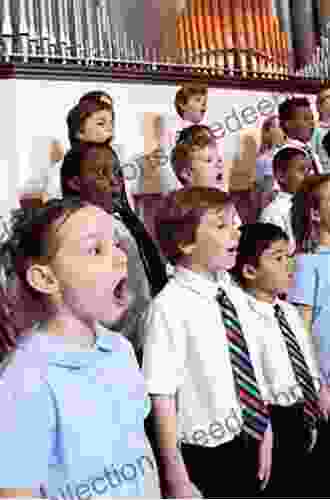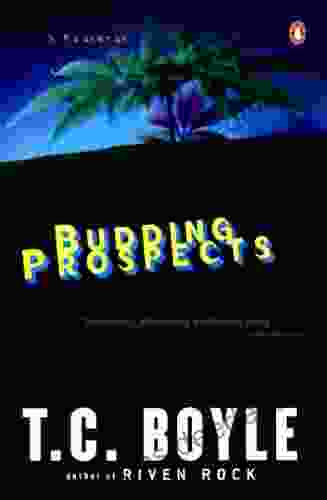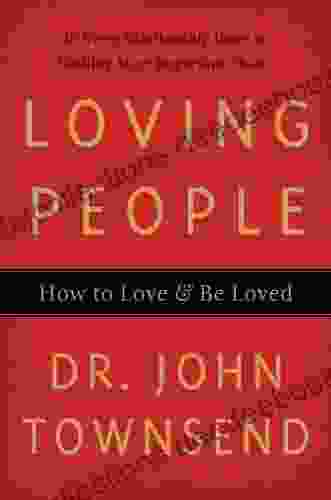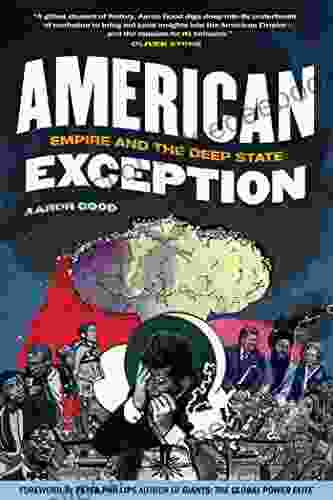Teaching Music Reading in the Choral Classroom

Music reading is a fundamental skill for choral singers. It allows them to decode musical notation and translate it into sound, enabling them to participate fully in the ensemble. Teaching music reading in the choral classroom can be a challenging but rewarding task, and there are many different approaches that choral educators can take.
In this article, we will provide a comprehensive guide to teaching music reading in the choral classroom. We will discuss the following topics:
4.2 out of 5
| Language | : | English |
| File size | : | 15776 KB |
| Text-to-Speech | : | Enabled |
| Screen Reader | : | Supported |
| Enhanced typesetting | : | Enabled |
| Word Wise | : | Enabled |
| Print length | : | 192 pages |
| Lending | : | Enabled |
- The importance of music reading
- Different approaches to teaching music reading
- Sight-singing and rhythm reading
- Solfege and music theory
- Active learning and assessment
- Technology and music reading
The Importance of Music Reading
Music reading is important for choral singers for a number of reasons. First, it allows them to participate fully in the ensemble. When singers can read music, they are able to rehearse and perform independently, and they can follow along with the conductor more easily.
Second, music reading helps singers to develop their musical skills. By learning to decode musical notation, singers develop their pitch and rhythm accuracy, and they learn to understand the structure of music. This knowledge can help them to become better musicians overall.
Third, music reading opens up a world of musical possibilities for singers. When singers can read music, they can explore a wide variety of choral literature, from simple folk songs to complex classical pieces. This exposure to different styles of music can help singers to develop their musical tastes and appreciation.
Different Approaches to Teaching Music Reading
There are many different approaches to teaching music reading in the choral classroom. Some of the most common approaches include:
- Sight-singing: Sight-singing is the ability to sing music at first sight, without any prior preparation. This is a challenging skill, but it is an essential one for choral singers.
- Rhythm reading: Rhythm reading is the ability to decode and perform musical rhythms. This skill is essential for singers to be able to sing in time and with the correct rhythm.
- Solfege: Solfege is a system of syllables that are used to represent the notes of the scale. This system can help singers to learn the names of the notes and to sing with correct pitch.
- Music theory: Music theory is the study of the structure of music. This knowledge can help singers to understand how music is put together, and it can help them to sight-sing and perform music more accurately.
The best approach to teaching music reading will vary depending on the needs of the students and the teacher. However, it is important to use a variety of approaches to keep students engaged and to help them develop a comprehensive understanding of music reading.
Sight-Singing and Rhythm Reading
Sight-singing and rhythm reading are two essential skills for choral singers. Sight-singing is the ability to sing music at first sight, without any prior preparation. Rhythm reading is the ability to decode and perform musical rhythms.
There are a number of different ways to teach sight-singing and rhythm reading. One common approach is to use solfege syllables. Solfege syllables are a system of syllables that are used to represent the notes of the scale. This system can help singers to learn the names of the notes and to sing with correct pitch.
Another common approach to teaching sight-singing and rhythm reading is to use rhythmic patterns. Rhythmic patterns are short, repeating patterns of notes that can help singers to develop their rhythmic accuracy. These patterns can be sung or played on a variety of instruments.
It is important to start teaching sight-singing and rhythm reading early on in the choral experience. The sooner students begin to develop these skills, the better prepared they will be for singing in the ensemble.
Solfege and Music Theory
Solfege and music theory are two important subjects for choral singers to study. Solfege is a system of syllables that are used to represent the notes of the scale. This system can help singers to learn the names of the notes and to sing with correct pitch.
Music theory is the study of the structure of music. This knowledge can help singers to understand how music is put together, and it can help them to sight-sing and perform music more accurately.
There are a number of different ways to teach solfege and music theory. One common approach is to use solfege syllables to sing simple melodies. This can help singers to learn the names of the notes and to develop their pitch accuracy.
Another common approach to teaching music theory is to use worksheets and exercises. These exercises can help singers to understand the different elements of music, such as rhythm, harmony, and form.
It is important to start teaching solfege and music theory early on in the choral experience. The sooner students begin to learn these subjects, the better prepared they will be for singing in the ensemble.
Active Learning and Assessment
Active learning is a teaching method that involves students in the learning process. This can be done through a variety of activities, such as singing, playing instruments, and discussing music. Active learning is an effective way to teach music reading because it allows students to experience music firsthand and to apply what they are learning.
Assessment is an important part of the teaching process. It allows teachers to track student progress and to identify areas where students need additional support. There are a number of different ways to assess music reading, such as:
- Sight-singing tests: Sight-singing tests are a common way to assess students' ability to sing music at first sight.
- Rhythm reading tests: Rhythm reading tests are a common way to assess students' ability to decode and perform musical rhythms.
- Solfege tests: Solfege tests are a common way to assess students' knowledge of solfege syllables and their ability to sing with correct pitch.
- Music theory tests: Music theory tests are a common way to assess students
4.2 out of 5
| Language | : | English |
| File size | : | 15776 KB |
| Text-to-Speech | : | Enabled |
| Screen Reader | : | Supported |
| Enhanced typesetting | : | Enabled |
| Word Wise | : | Enabled |
| Print length | : | 192 pages |
| Lending | : | Enabled |
Do you want to contribute by writing guest posts on this blog?
Please contact us and send us a resume of previous articles that you have written.
 Book
Book Novel
Novel Page
Page Story
Story Reader
Reader E-book
E-book Magazine
Magazine Paragraph
Paragraph Bookmark
Bookmark Glossary
Glossary Bibliography
Bibliography Annotation
Annotation Manuscript
Manuscript Scroll
Scroll Codex
Codex Tome
Tome Library card
Library card Narrative
Narrative Reference
Reference Dictionary
Dictionary Thesaurus
Thesaurus Narrator
Narrator Character
Character Librarian
Librarian Catalog
Catalog Card Catalog
Card Catalog Borrowing
Borrowing Stacks
Stacks Archives
Archives Scholarly
Scholarly Lending
Lending Reserve
Reserve Academic
Academic Rare Books
Rare Books Special Collections
Special Collections Interlibrary
Interlibrary Dissertation
Dissertation Reading List
Reading List Book Club
Book Club Textbooks
Textbooks C R Daems
C R Daems Alan Champorcher
Alan Champorcher Cindy Krum
Cindy Krum Andrew Dobson
Andrew Dobson Daryl Farmer
Daryl Farmer Sandra Millman Verand
Sandra Millman Verand Samuel Stein
Samuel Stein Teri Crews
Teri Crews Justin A Frank
Justin A Frank Stanley Foster Reed
Stanley Foster Reed Denise K Loock
Denise K Loock Abe Kass
Abe Kass Sammy Mason
Sammy Mason Heather Black
Heather Black Alexander Hernandez
Alexander Hernandez David Swanson
David Swanson Sarah E Fiarman
Sarah E Fiarman Eat Like A Local
Eat Like A Local Karl Christ
Karl Christ Todd Wolfson
Todd Wolfson
Light bulbAdvertise smarter! Our strategic ad space ensures maximum exposure. Reserve your spot today!

 Brady MitchellGender and Colonial Space: Power, Identity, and Urban Culture in British...
Brady MitchellGender and Colonial Space: Power, Identity, and Urban Culture in British... Francis TurnerFollow ·9.1k
Francis TurnerFollow ·9.1k Walter SimmonsFollow ·12.8k
Walter SimmonsFollow ·12.8k Arthur C. ClarkeFollow ·13.7k
Arthur C. ClarkeFollow ·13.7k DeShawn PowellFollow ·4.8k
DeShawn PowellFollow ·4.8k David PetersonFollow ·13.2k
David PetersonFollow ·13.2k Hector BlairFollow ·12.4k
Hector BlairFollow ·12.4k Wesley ReedFollow ·17k
Wesley ReedFollow ·17k August HayesFollow ·2.5k
August HayesFollow ·2.5k
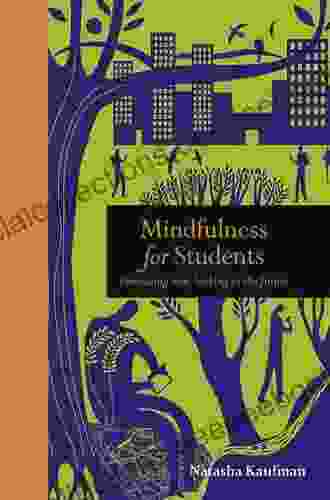
 Andy Hayes
Andy HayesEmbracing Now: Embark on a Mindfulness Journey for a...
In a world...
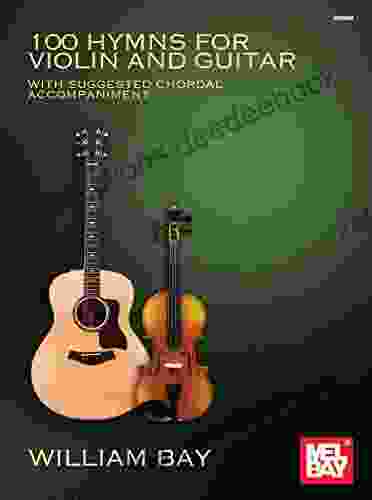
 Heath Powell
Heath Powell100 Hymns for Violin and Guitar: A Comprehensive Guide to...
The violin and...

 Floyd Richardson
Floyd RichardsonBark In The Park: Poems For Dog Lovers
Dogs are our best...
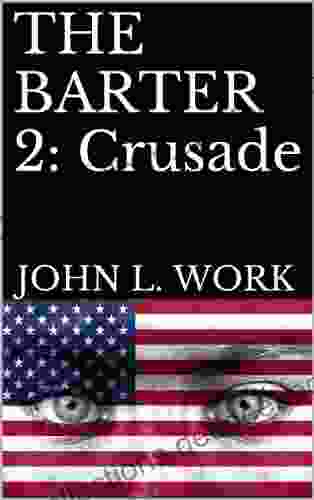
 Douglas Adams
Douglas AdamsThe Barter Crusade: A Journey into the Realm of Exchange...
In a world driven by monetary transactions,...

 Nathaniel Hawthorne
Nathaniel HawthorneInsight Guides Explore Nice & the French Riviera...
Prepare to embark on an unforgettable journey...
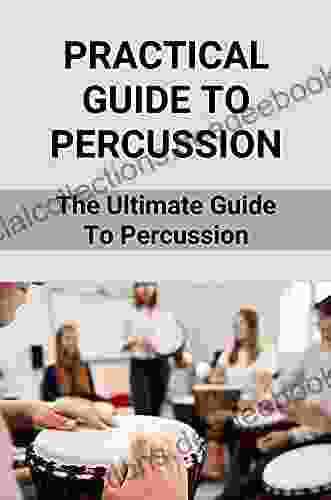
 Carlos Fuentes
Carlos FuentesThe Ultimate Practical Guide to Percussion: Exploring the...
Embark on a journey into the enchanting...
4.2 out of 5
| Language | : | English |
| File size | : | 15776 KB |
| Text-to-Speech | : | Enabled |
| Screen Reader | : | Supported |
| Enhanced typesetting | : | Enabled |
| Word Wise | : | Enabled |
| Print length | : | 192 pages |
| Lending | : | Enabled |


